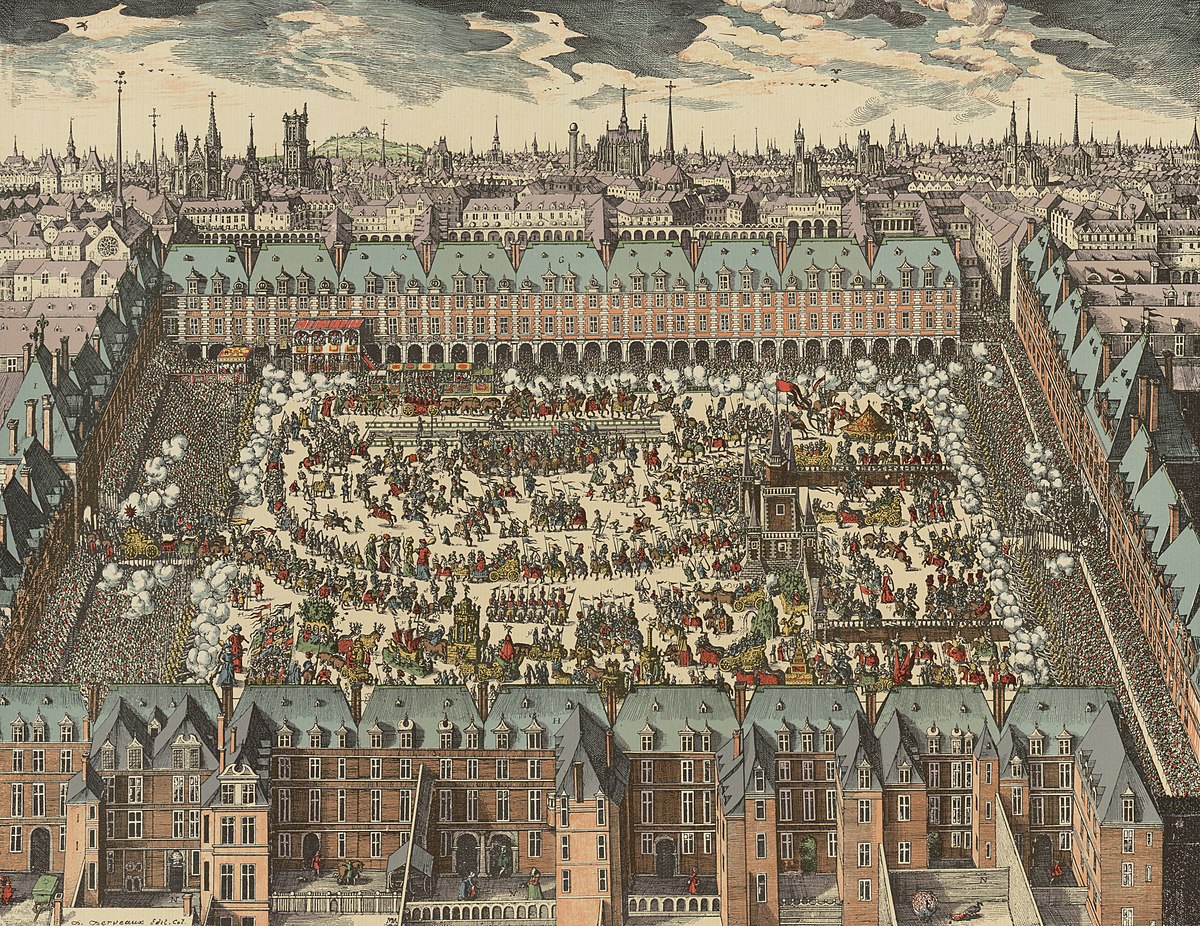
Paris under Louis XIV
Paris, FranceRichelieu died in 1642, and Louis XIII in 1643. At the death of his father, Louis XIV was only five years old, and his mother Anne of Austria became regent. Richelieu's successor, Cardinal Mazarin, tried to impose a new tax upon the Parlement of Paris, which consisted of a group of prominent nobles of the city. When they refused to pay, Mazarin had the leaders arrested. This marked the beginning a long uprising, known as the Fronde, that pitted the Parisian nobility against royal authority. It lasted from 1648 to 1653.
At times, the young Louis XIV was held under virtual house arrest in the Palais-Royal. He and his mother were forced to flee the city twice, in 1649 and 1651, to the royal château at Saint-Germain-en-Laye, until the army could retake control of Paris. As a result of the Fronde, Louis XIV had a profound lifelong distrust of Paris. He moved his Paris residence from the Palais-Royal to the more secure Louvre and then, in 1671, he moved the royal residence out of the city to Versailles and came into Paris as seldom as possible.
Despite the distrust of the king, Paris continued to grow and prosper, reaching a population of between 400,000 and 500,000. The king named Jean-Baptiste Colbert as his new Superintendent of Buildings, and Colbert began an ambitious building programme to make Paris the successor to ancient Rome. To make his intention clear, Louis XIV organised a festival in the carrousel of the Tuileries in January 1661, in which he appeared, on horseback, in the costume of a Roman Emperor, followed by the nobility of Paris. Louis XIV completed the Cour carrée of the Louvre and built a majestic row of columns along its east façade (1670). Inside the Louvre, his architect Louis Le Vau and his decorator Charles Le Brun created the Gallery of Apollo, the ceiling of which featured an allegoric figure of the young king steering the chariot of the sun across the sky. He enlarged the Tuileries Palace with a new north pavilion, and had André Le Nôtre, the royal gardener, remodel the gardens of the Tuileries.
Across the Seine from the Louvre, Louis XIV built the Collège des Quatre-Nations (College of the Four Nations) (1662–1672), an ensemble of four baroque palaces and a domed church, to house sixty young noble students coming to Paris from four provinces recently attached to France (today it is the Institut de France). In the center of Paris, Colbert constructed two monumental new squares, Place des Victoires (1689) and Place Vendôme (1698). He built a new hospital for Paris, La Salpêtrière, and, for wounded soldiers, a new hospital complex with two churches, Les Invalides (1674). Of the two hundred million livres that Louis spent on buildings, twenty million were spent in Paris; ten million for the Louvre and the Tuileries; 3.5 million for the new royal Gobelins Manufactory and the Savonnerie, 2 million for Place Vendôme, and about the same for the churches of Les Invalides. Louis XIV made his final visit to Paris in 1704 to see Les Invalides under construction.
For the poor of Paris, life was very different. They were crowded into tall, narrow, five- or six-story high buildings that lined the winding streets on the Île de la Cité and other medieval quarters of the city. Crime in the dark streets was a serious problem. Metal lanterns were hung in the streets, and Colbert increased to four hundred the number of archers who acted as night watchmen. Gabriel Nicolas de la Reynie was appointed the first lieutenant-general of police of Paris in 1667, a position he held for thirty years; his successors reported directly to the king.
